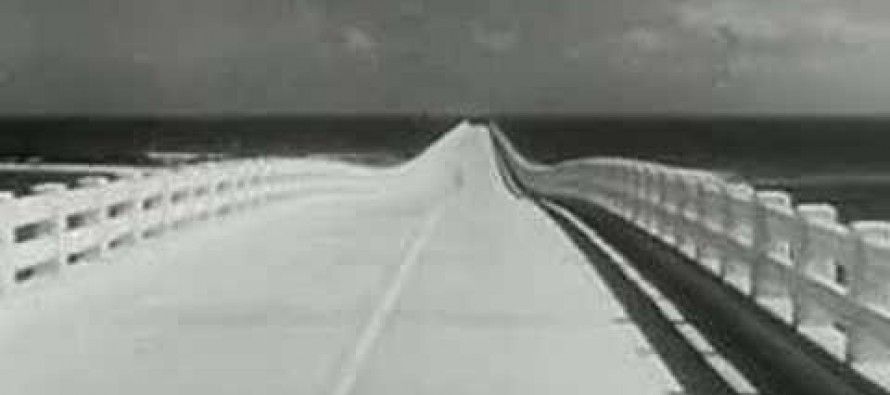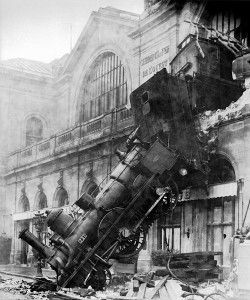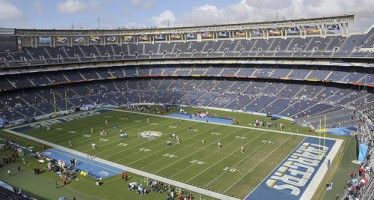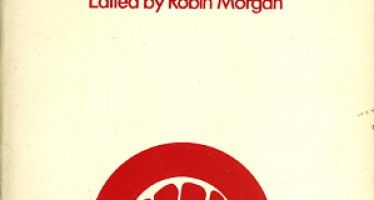LAO Rings Death Knell for High-Speed Rail

By JOHN SEILER
The high-speed choo-choo is dead. A new report by the Legislative Analyst effectively drives a silver railroad spike through its heart.
In 2008, voters passed Proposition 1A, the grandiloquently named Safe, Reliable High-Speed Passenger Train Bond Act for the 21st Century.
But even then, only 53 percent of voters favored it; 47 percent of voters oppose it. And it’s likely that 53 percent of voters favored it only because then-Gov. Arnold Schwarzenegger campaigned for it. Just three months later, in February 2009, Arnold increased taxes a record $13 billion to close the massive deficit his wild spending had caused, and his once-high popularity crashed.
In November 2008, California’s fiscal party was in full fury; three months later, it was over and everyone suffered a monster hangover.
The bond amount was a hefty $9 billion. According to Ballotpedia, here’s the promise sold to voters:
This will partially fund a $40 billion, 800-mile high speed train under the supervision of the California High-Speed Rail Authority. The train will run between San Francisco and Los Angeles, with Anaheim, California, designated as the southern terminus of the initial segment of the high-speed train system. Estimates are that the train system would be completed in 2030, and that it would take passengers between San Francisco and Los Angeles in about 2 hours and 40 minutes. The system, when built, is expected to carry more than 120,000 riders per day at speeds of up to 200 mph.
But the train was unrealistic even then. After all, the state already had a transportation system that whisked people around the state at twice that speed: airplanes.
$20 billion — or $40 billion?
Now, state Legislative Analyst Mac Taylor has produced a report that sharply calls into question almost every aspect of the high-speed boondoggle. He uses restrained rhetoric, but the facts are there in “High-Speed Rail Is at a Critical Juncture.” He doesn’t quite call it a “boondoggle.” But that’s the impression one gets on reading the report.
The analyst notes that the actual cost of the bonds, including principle and interest, is between $18 billion and $20 billion. The yearly payments on those bonds would be $1 billion a year.
I would add that the costs could go much higher if the Federal Reserve Board raises interest rates to dampen the inflation the Fed itself has caused through its “Quantitative Easing” policy. The last time America suffered through a stagflation (stagnation + inflation) period like this, in the 1970s, it could only be ended with the Fed boosting interest rates to well above 10 percent in the early 1980s. Something similar will be needed this time to prevent Weimar-style hyperinflation.
Just last week, famed bond manager Bill Gross warned against holding U.S. Treasuries, previously considered the world’s safest investment:
“Holding Treasuries at these yield levels for an extended period of time represents an abdication of responsibility,” Gross wrote.
The real 10-year yield, or the difference between the consumer price index and the Treasury rate, declined to 0.45 percent on May 6, the least since 2008. Based on two-year Treasuries, the real yield is negative 2.15 percent.
That means that, if you hold the Treasuries for two years, you would lose 2.15 percent of your investment. So why would anybody buy them? The only way out will be for the Fed to increase interest rates, which will affect not only Treasuries, but all debt, including California bonds.
Which means that the cost of the Prop. 1A bonds, instead of being $20 billion, could end up being a lot more — $30 billion? $40 billion?
Dubious Funding
Although the Leg Analyst does not list them in an alarmist way, presenting the facts dispassionately, he does identify numerous insurmountable problems that will prevent the high-speed rail project from doing anything except waste a couple of billion dollars on preparations. I’ll just discuss the financial hurdles. One was the debt problem, analyzed above.
Another problem is, “Availability of the Funding Necessary for the New System is Highly Uncertain.” The Analyst writes:
Federal Funding Assumptions Appear Unrealistic. The HSRA’s latest business plan assumes the state will receive $17 billion to $19 billion from the federal government for construction of the high-speed rail system. To date, HSRA has secured roughly $3.6 billion in federal funding for development of the project. Of that, roughly $3 billion is dedicated to the construction of the system; $400 million was given to the developers of the San Francisco Transbay Transit Center, one of the planned high-speed rail stations; and nearly $200 million will be used by HSRA for project-wide preliminary engineering and environmental clearance work. The HSRA indicates that without additional significant federal support beyond that provided to date, the project cannot be completed. Given the federal government’s current financial situation and the current focus in Washington on reducing federal spending, it is uncertain if any further funding for the high-speed rail program will become available.
The analyst also contrasts the high-speed rail program with the interstate highway system that was built in the 1950s and 1960s. The latter was funded long-term with a federal excise tax on gasoline — in effect, a user tax. But the high-speed rail would have no direct federal funding source.
Going beyond what the Analyst wrote, the real problem here is that the interstate highway system had a high degree of utility for Americans. A lot of pork and waste was involved as the expressways were put in locations favored — or not favored — by powerful politicians. But Americans soon were enjoying driving all around the country, as glamorized in such commercials as “See the USA in Your Chevrolet,” starring the beauteous Dinah Shore.
And the interstate highway system also greatly advanced trucking traffic, making commerce more efficient. By contrast, America already has a highly developed and efficient cargo rail system.
Moreover, Republicans now control the U.S. House of Representatives, probably at least through 2014. Their Tea Party activists keep clamoring to reduce the $1.6 trillion deficit and the $14 trillion debt. So the chances that the Republicans would approve any more funding for a California runaway train boondoggle is not only remote, but nonexistent.
What Other Funding?
A third problem is, according to the LAO, “Basis for Assuming Other Funding Contributions Is Unclear.” He warns:
The 2009 business plan assumes that $14 billion to $17 billion of the project’s construction costs would be paid with funds from local agencies and private partners. The 2009 business plan assumes that $14 billion to $17 billion of the project’s construction costs would be paid with funds from local agencies and private partners….
The current HSRA business plan does not provide any details about the business model and how, as it now assumes, it will attract substantial funding from local agencies and private partners to build the system.
Would you invest in this boondoggle? I didn’t think so. Neither would anybody else. Even in boom times, such as five years ago, it would have been difficult to find anyone to fund this project. During the ongoing economic slump, people are being even more careful with their money.
Any investment firm ponying up millions or billions for the high-speed choo-choo would end up sued by its shareholders for misfeasance.
Subsidies Inevitable
The LAO notes:
The current HSRA business plan does not provide any details about the business model and how, as it now assumes, it will attract substantial funding from local agencies and private partners to build the system.
However, if the funding falls short — as inevitably it will — the LAO writes:
Absent the identification of another source of operating funds for the train system, this situation could place an additional financial pressure on the state’s General Fund.
So California’s general fund, which began this year $25 billion in the red, could be hit up for potentially hundreds of millions of dollars in operating subsidies. That would be in addition to the at least $1 billion yearly in finance costs for the $9 billion in bonds. There simply isn’t the money for it.
Funding So Far
Up to this point, the LAO finds this has been spent:
To date, HSRA has secured roughly $3.6 billion in federal funding for development of the project. Of that, roughly $3 billion is dedicated to the construction of the system; $400 million was given to the developers of the San Francisco Transbay Transit Center, one of the planned high-speed rail stations; and nearly $200 million will be used by HSRA for project-wide preliminary engineering and environmental clearance work.
So, basically, the only part that will be built is the pork for the Bay Area. That’s the home base of California’s four most powerful politicians: Gov. Jerry Brown (former Oakland mayor), House Democratic Leader Nancy Pelosi (formerly House Speaker) of San Francisco and U.S. senators Dianne Feinstein and Barbara Boxer, both of Marin County.
Once again, the Bay Area, California’s wealthiest, gets massive pork with the rest of California — and America — paying for it.
A Train Going Nowhere
There’s much more in the LAO’s report, which is worth reading in full at only 28 pages. But the above suffices to show that this is a train that never will be built.
After all, how will the Legislature get the $1 billion (at least) per year in finance costs — and hundreds of millions of dollars in operating costs? Will it raise taxes? Or will it cut funding for education, police, fire, welfare, etc?
In the past two years, everybody in this state, including liberal Democrats, has realized that there are limits to what the state can spend. That’s why it was the liberal Democrats in the Legislature who voted for Gov. Jerry Brown’s proposal to cancel all the state’s redevelopment boondoggles, saving $1.7 billion. Those Democrats liked that redevelopment spending and programs, but chose to give priority to other programs.
Unfortunately, Republicans in the Legislature so far have refused to end redevelopment, hypocritically calling for less spending while protecting this local pork. (Only the courageous Assemblyman Chris Norby of Fullerton voted to end redevelopment.)
But the point is that the high-speed rail project is even a bigger boondoggle than redevelopment. And it hardly has been started yet.
So what will happen is that some more hundreds of millions will dribble out for studies and staff salaries, and for Bay Area pork.
But nothing else will be done. In a couple of years, the whole train wreck of a project will be cancelled.
Related Articles
Chargers want out in San Diego
The San Diego Chargers — for 54 years a community institution in what’s grown into California’s second-largest city — appear
Is budget a tragedy or a horror?
SEPT. 2, 2010 As entertainment goes, the final regular-season episode of the Budget Show in the Capitol was shoddy. The
Capitol Weekly Top 100 List snubs women
No sooner had Capitol Weekly announced its list of “the most powerful movers and shakers in California politics” than Sacramento





